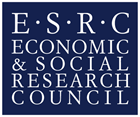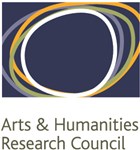Endangered complexity: Inflectional classes in Oto-Manguean languages
Workshop on Inflectional Classes Languages of the Americas
The Surrey Morphology Group organized session entitled 'Inflectional Classes in the Languages of the Americas' on 6 January 2013 as part of the Society for the Study of the Indigenous Languages of the Americas (SSILA) Annual Meeting 2013 held during the 87th Annual Meeting of the Linguistics Society of America in Boston, MA from 3 to 6 January 2013.
This workshop was part of the ESRC/AHRC co-funded research project 'Endangered complexity: Inflectional classes in Oto-Manguean languages'.
Background
Inflectional morphology expresses grammatical information, and in an ideal world, each distinct form would correspond to a distinct meaning. But inflectional markers may also display apparently unmotivated morphological differences. Often such inflectional allomorphy pervades the entire paradigm so that a given word class falls into morphologically distinct inflection classes. Inflection classes are seemingly useless in functional terms, and yet they are widely found across languages and remarkably resilient over time.
By resisting a syntactic or phonological explanation, inflectional classes are in themselves an interesting object of study for a theory of language: they introduce into the linguistic system a layer of complexity which is purely morphological. This has motivated recent growth in research. See for example Ackerman et al. (2009), Finkel and Stump (2007), or Müller (2007) among others. Nevertheless current knowledge of inflectional classes is still largely based on European languages and is thus limited by their typological characteristics. The languages of the Americas are notable for the richness of their morphology, but remain a largely untapped resource for the study of inflectional class systems, although a number of studies have indeed revealed layers of morphological complexity in some of these languages that go far beyond the requirements of syntax, such as for example Angulo (1933) and more recently Blevins (2005) and Campbell (2011), among others. These morphological structures in turn may interact with more general phonological and semantic principles. Such borderline cases reveal ways that allow inflectional classes to emerge in linguistic systems and ways that may help language users to maintain them over time. In this regard, studies based on lesser known languages can help to enhance our understanding of the role played by such factors in how inflectional classes operate.
References cited
Ackerman, Farrell, James P. Blevins & Robert Malouf. 2009. Parts and wholes: Implicative patterns in inflectional paradigms. In James P. Blevins & Juliette Blevins (eds), Analogy in grammar: Form and acquisition, , 54-82. Oxford: Oxford University Press.
Angulo, Jaime. 1933. The Chichimeco language, International Journal of American Linguistics 7: 152-194.
Blevins, Juliette. 2005. Yurok verb classes. International Journal of American Linguistics 71, 3: 327-349.
Campbell, Eric. 2011. Zenzontepec Chatino aspect morphology and Zapotecan verb classes. International Journal of American Linguistics 77, 2: 219-246.
Finkel, Raphael & Gregory T. Stump. 2007. Principal parts and morphological typology. Morphology 17, 1: 39-75.
Müller, Gereon. 2007. Notes on paradigm economy. Morphology 17, 1: 1-38.
Programme
The session included a selection of papers on a number of different indigenous languages of the Americas which contributed to the building of an empirical foundation for the study of the relation between the lexicon and the morphology.
6 January 2013
| 09.00 - 09.30 | (1) Matthew Baerman, Greville G. Corbett, Dunstan Brown & Enrique L. Palancar (University of Surrey & University of York), 'Inflectional classes in the languages of the Americas: An overview' |
| 09.30 - 10.00 | (2) Claire K. Turner (University of British Columbia) and Suzanne Urbanczyk (University of Victoria), 'Determining Inflectional Classes in Central Salish' (Central Salish, Salish) |
| 10.00 - 10.30 | (3) Jean-Pierre König (University at Buffalo) and Karin Michelson (University at Buffalo), 'How complex can the paradigm for a single position class be?' (Oneida, Iroquoian) |
| 10.30 - 11.00 | (4) Emiliano Cruz Santiago (Smithsonian Institute), Víctor Vázquez Castillejos (Smithsonian Institute), Mark Sicoli (Georgetown University) and Gabriela Pérez Báez (Smithsonian Institute), 'Inflectional classes and tonal morphology across 10 Zapotec languages' (Oto-Manguean, Zapotecan, Zapotec) |
| 11.00 - 11.30 | (5) Emiliana Cruz (UMass, Amherst) and Anthony C. Woodbury (University of Texas at Austin), 'Tonal complexity in San Juan Quiahije Chatino compound verb inflection' (Oto-Manguean, Zapotecan, Chatino) |
| 11.30 - 12.00 | (6) Eric Campbell (University of Texas at Austin), 'Tonal complexity in Zenzontepec Chatino verbal inflection' (Oto-Manguean, Zapotecan, Chatino) |
| 12.00 - 12.30 | (7) Enrique L. Palancar (CNRS/University of Surrey):, 'Revisiting the conditioning and distribution of the subject suffixes in Lealao Chinantec' (Oto-Manguean, Chinantec) |
These different papers tackle aspects of interest for a theory of inflectional classes. Paper (1) gives an overview of the theoretical issues which are relevant for the structure and typology of inflectional classes. Papers (2) and (7) tackle the topic of what principles can govern lexeme class membership in inflectional classes for two very different language families, Salish and Chinantecan. Paper (3) on Iroquoian classes tackles the issue of the degree of predictability of class assignment from a given form in the paradigm, while paper (5) on San Juan Quiahije Chatino deals with the degree of inflectional overlap across the paradigms of different classes. Two more papers, (4) and (6), provide valuable insights onto how a diachronic approaches to tone, a characteristic exponent of inflectional contrasts in Oto-Manguean, can help understand the complexities behind the structure of inflectional classes in the Chatino language family or the large dialectal variation of the Zapotec family.
The session accommodated papers (2) and (3) on two language families of North America: Central Salish, a subgroup of the Salish family, and Iroquoian. The remaining four papers (4-7) were on languages from three different families of the Oto-Manguean phylum of Mexico. There is a reason that justifies the presence of four papers on Oto-Manguean languages for a session on inflectional classes. It is that Oto-Manguean languages commonly display an unparalleled richness of inflectional class systems which can both serve as a point of departure for investigating the full range of typological possibilities and provide important evidence of the limits of inflectional idiosyncrasy that a language can tolerate.
Project members
Prof Greville G. Corbett
Dr Matthew Baerman
Prof Dunstan Brown (University of York)
Dr Enrique Palancar
Dr Timothy Feist
Period of award:
March 2012 - February 2015
Funder
Economic and Social Research Council (ESRC) and Arts and Humanities Research Council (AHRC)
TOP


